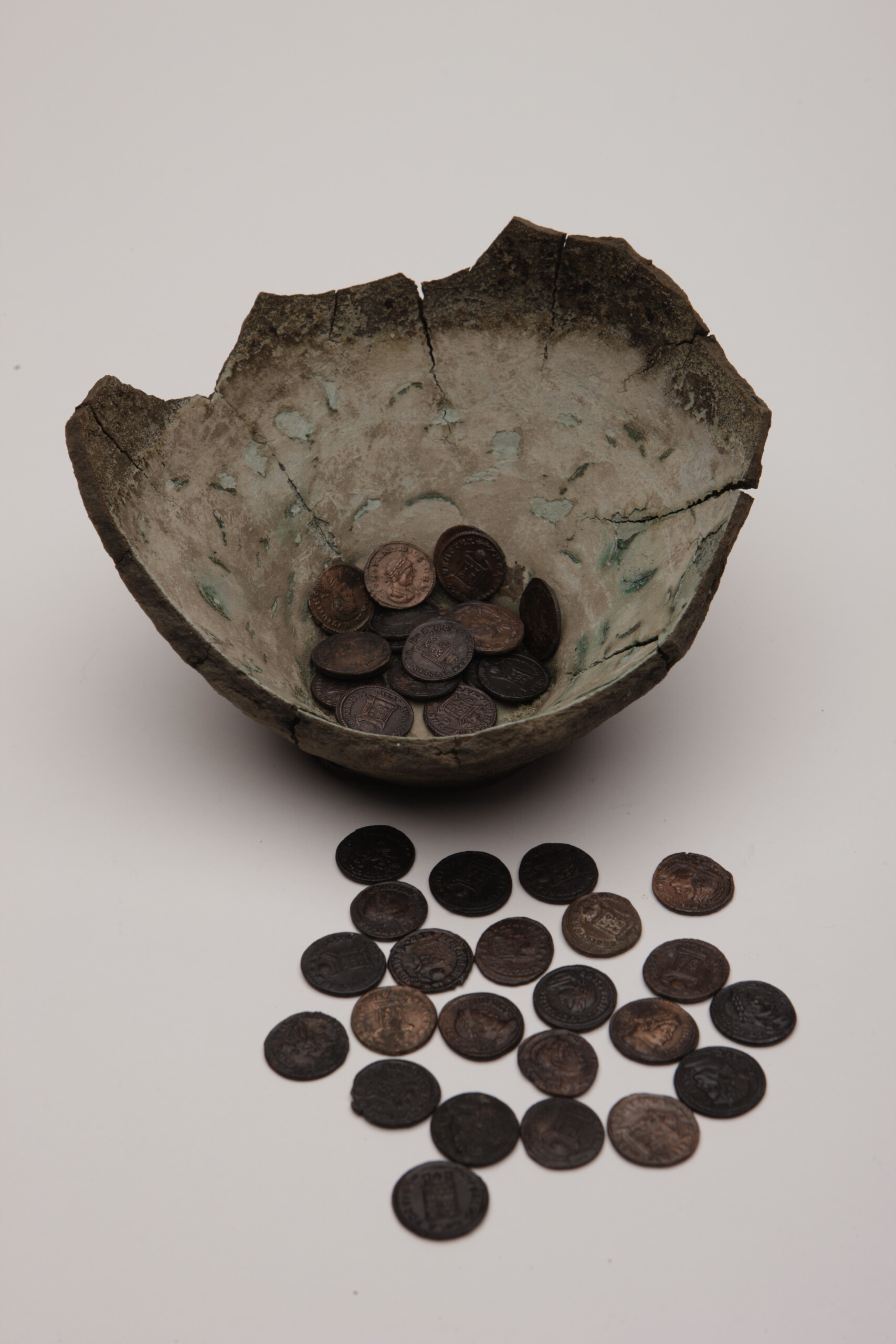
in Italiano / Italian translated by Federica Sebastiano
This object has been translated into 7 different languages by 7 different users
Questo vaso contenente un gruzzolo di monete romane è stato trovato dai membri del gruppo speleologico del Derbyshire (Derbyshire Caving Club) mentre bloccavano un pozzo minerario ad Alderley Edge per metterlo in sicurezza.
Le monete sono di rame e risalgono all’ultimo periodo dell’Impero Romano (317-333 d.C.).
Qual è l’oggetto più bello che avete trovato all’aperto?
Notes on the translation
Surprisingly, the most difficult part of this translation was the title. I particularly struggled to translate the word “hoard”. This word usually indicates a precious stockpile. It is also often associated with treasures that are carefully guarded and occasionally even kept in secret. I wanted to evoke this meaning in Italian but it took me a while to come up with the right word. Ultimately, I decided to use the term “gruzzolo” because it is most commonly used to describe a discreet sum of money, usually accumulated with time. Both “hoard” and “gruzzolo” evoke the sense that the stockpile is precious to its owner and carefully safeguarded.
I also decided to translate “Derbyshire Caving Club” but then include the original name in parentheses. The translation should help readers understand the nature of the club but I thought that if anyone would like to look it up they would require the official name so that is why I included it.
Notes on Italian culture
The first major monetary reform of the imperial period was the Monetary Reform of Augustus, which provided for the minting of gold and silver coins to be controlled directly by the emperor, while the senate could decide on the minting of coins of lesser value.
The most valuable coin in ancient Rome was the “aureus” which was made entirely of gold and circulated only in the hands of the noble senators and their consorts, who purchased fine cloth for silk garments at exorbitant costs.
The second most important coin was the “denar”, a small silver coin. This was the currency with which soldiers were paid, who earned about 600 in a year.
The “sestertius” is perhaps the most famous coin to this day because it was the one most used by the Romans when they went to market; it is a coin made from a metal similar to brass.
Among the less valuable coins was the “axis” which was a bronze coin.
The first thing a Roman emperor did as soon as he came to power was to create a coin where on one side was his own portrait. During the rule of the Julio-Claudian dynasty, there were profiles of Augustus, Tiberius, Caligula, Claudius, and Nero. This proved particularly beneficial to us as the discovery of Roman coins by archaeologists helped historians determine what many Roman emperors looked like.
On the reverse side of silver and bronze coins, we can also find images of animals, such as bulls or horses, gladiatorial clashes, snapshots of glorious battles, gods and heroes, commemorations of events and monuments (such as the Colosseum), sacred moments, weapons and inscriptions. With an unparalleled level of detail and accuracy.
Do you have something you’d like to say, in your own language or English, about the object or translation? We’d like to hear what you think.
Translations are community-sourced and for anyone to participate in, however you use your language. For more information, see Community Guidelines.
Write a Reply or Comment